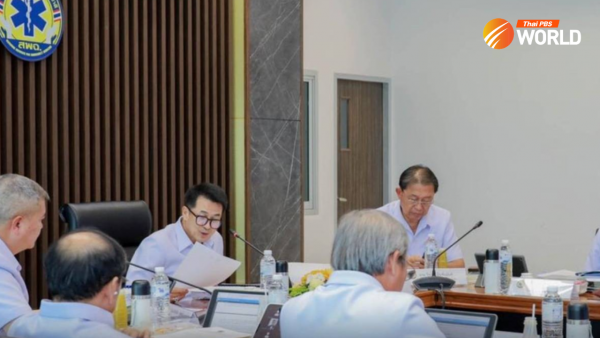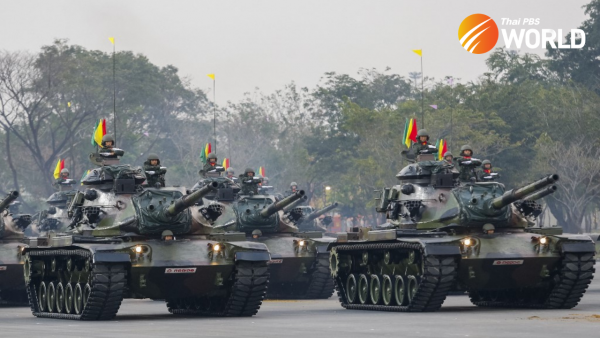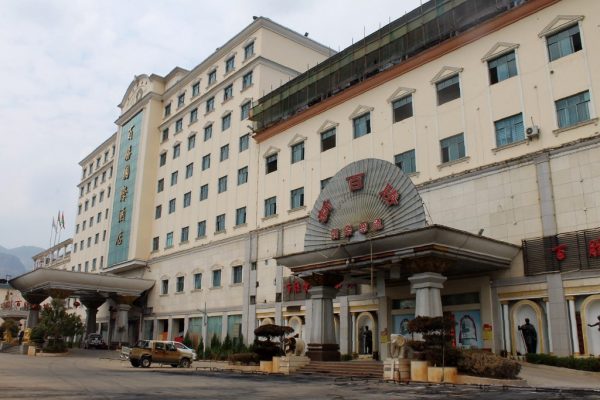Protesters plant “spirit of democracy” in royal field

The lost legacy of Khana Ratsadon was symbolically reborn when a new memorial plaque embodying the spirit of the 1932 Siamese Revolution was embedded by anti-government protesters at Sanam Luang in Bangkok early Sunday morning.
In a move seen as a bold show of opposition to the Thai monarchy, leaders of the student-led anti-establishment movement cemented a commemorative “People’s Plaque” in the royal ground near the Grand Palace at 6.39am, declaring that Thailand “belongs to the people”.
Tens of thousands of protesters gathered at the ground on Saturday afternoon in the largest protest since the 2014 coup, many camping there overnight.
The new brass plaque carries the date September 20, 2020, followed by the proclamation: “At this place, the people have expressed their will that this country belongs to the people and is not the property of the monarch as they have deceived us.”
Dubbed the “1932 Revolution Plaque 2”, organisers said it was a replacement for Khana Ratsadon 1932 Revolution Memorial Plaque marking the end of absolute monarchy, which mysteriously went missing from the Royal Plaza in 2017.
People queued up to take photos of the new marker amid fears that it would be removed by authorities. The plaque disappeared the following day.
The new Sanam Luang plaque will be regarded “as an immediate challenge”, said analyst Paul Chambers, warning that the growing acrimony could lead to “state violence against protesters”.
Khana Ratsadon, or the People’s Party, was a group of military and civilian officials who staged a bloodless coup against King Prajadhipok (Rama VII) and transformed the country from an absolute monarchy to a constitutional monarchy on June 24, 1932 – a date that has held growing significance for pro-democracy groups in recent years.
On December 10, 1936, the People’s Party planted the first and original plaque to mark the 1932 Revolution at the Royal Plaza near the equestrian statue of King Chulalongkorn. The place marked the spot where its leader Phraya Phahonphonphayuhasena read out a declaration announcing the dawn of democracy in Thailand.
A message on the 30-centimetre-diameter brass peg read: “At this place, at dawn on June 24, 1932, the People’s Party has given birth to the constitution for national prosperity.”
Pro-democracy Thais regard the 1932 Revolution Memorial Plaque as a symbol of the birth of Thai democracy. Along with Democracy Monument, the plaque became a historical site for annual June 24 celebrations of the 1932 Siamese Revolution. After the coup of September 19, 2006, the plaque became a core symbol of the anti-coup movement.
On April 14, 2017, the plaque was found to be missing and replaced by a fresh marker that made no mention of the historical event.
The message on the new plaque reads, “May Siam prosper forever [with] happy fresh-faced citizens becoming the force of the nation.” The rim bears another inscription reading: “Worshipping the Phra Ratanattaya [the Buddha, Dhamma and Sangha], the state and one’s family, and being faithful to the monarch will all contribute to the prosperity of the state.”
The old plaque is thought to have been removed between April 3 and 7 when tents were installed for renovation work around the equestrian statue of King Rama V.
No reason was given for its disappearance, prompting an uproar from activists and some historians. The government at that time denied any knowledge of the plaque’s fate while some military officials were quoted as saying it was removed for landscaping purposes.
Chulalongkorn University’s late history scholar Suthachai Yimprasert once said the plaque’s removal was aimed at destroying the symbol of Khana Ratsadonand erasing and rewriting history based on a conservative idea that was “lacking in intelligence”.
Pipat Krajaechan, a history lecturer at Thammasat University, said KhanaRatsadon’s plaque was an object of national significance that embodied the country’s transition from an absolute monarchy to a constitutional monarchy.
“The disappearance of the [old] plaque to fulfil someone’s belief, replacing it with a new plaque and message that ignores the facts, is nothing but a fantasy of history,” he said.
However, this is not the first time that the 1932 Revolution plaque has vanished. In 1960, the plaque was removed by Field Marshal Sarit Thanarat, who first led a coup in 1957, and then ousted the government again two years later and ruled until 1963. After his death in 1963, the plaque was reinstalled in its original location by Parliament secretary-general Prasert Patamasukhon.
At least five other sites commemorating the People’s Party are reported to have been removed or renamed over the past few years, in moves seen as attempts by the conservative establishment to erase the history of Thai democracy and destroy Khana Ratsadon’s legacies.
By Thai PBS World’s Political Desk






